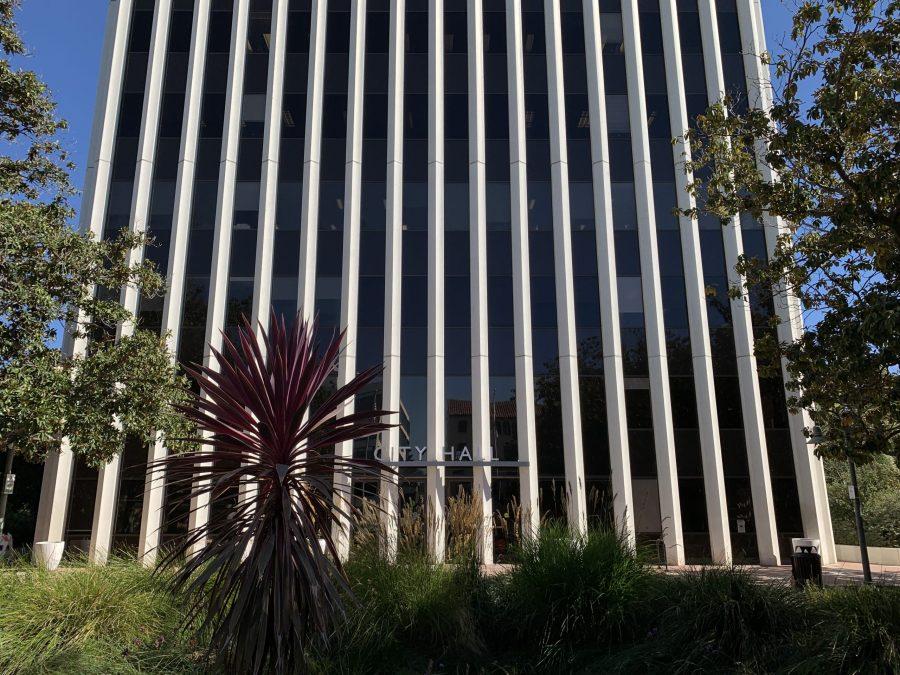Following the closure of long-time businesses such as the CineArts theatre and Mayfield Bakery, Palo Alto is grappling with the lack of tax revenue from local businesses because of the COVID-19 pandemic.
Businesses have been fighting to stay afloat since the start of the pandemic and the accommodations they had to make for social distancing restrictions and health regulations. In addition, many potential customers chose not to dine out because of fears of catching the virus.
Businesses that remained open continue to have lower incomes than before the pandemic despite efforts to adapt, creating a dramatic drop in tax revenue for the city. Michael Kelly, manager of Howie’s Pizza in Town and Coutnry, said his business experienced a massive decrease in revenue during the pandemic.
“During the initial shutdown, we were worried about our workers, and we were only operating with three staff members,” Kelly said. “We saw down to probably about 15% of what we usually do, which lasted for about the first six weeks or so.”
City Council member Greg Tanaka said the drop in tax revenue has a lot to do with the demographics of Palo Alto customers.
“Palo Alto used to double during the day; we had all these people come into our cities who eat at our restaurants, shop at our place and stay in our hotels,” Tanaka said. “A lot of people who work in Palo Alto are in professional, white-collar jobs that can be done over Zoom, and so unfortunately, because all these workers have not come back to the office yet, a lot of the revenue associated with them being in our city (is lost).”
Economics teacher Debbie Whitson said some businesses were able to adapt more easily to the pandemic.
“Lots of stores like small retail boutiques and workout places closed; that’s just the fact of no demand,” Whitson said. “But other businesses have thrived, like the startup world, which (can be done) remotely and is still going strong.”
Meanwhile, Tanaka said he has pushed for measures to help struggling businesses, including small business grants, streamlining COVID-19 regulations and providing more avenues for feedback from businesses.
One decision Tanaka said the council made to help businesses during the pandemic was to vote to close commercial streets like California Avenue and University Avenue to vehicle traffic, allowing for more outdoor dining space for restaurants. However, the City Council voted on Sept. 17 to reopen University Avenue to help retailers who suffered from decreased accessibility to their business.
“The closure was oriented to push the foot traffic to the center of the street versus the sidewalks, so the foot traffic is away from the retailers,” Tanaka said. “Also, the retailers have historically been much more kind of drive-to versus just walk-by type of traffic.”
Tanaka said he will be watching to see whether the effects of reopening University Avenue boost economic activity in the city.
Regardless of how the University Avenue reopening plays out, with decreased revenue from sales tax, the City Council needs to answer questions about how to allocate the shrinking budget of Palo Alto.
Their decision could impact the recreation facilities and infrastructure of the city, Whitson said.
“Either there’s no income for the city and therefore you cut services or you figure out how to get money in,” she said.
Tanaka said one of the best ways for the city to shrink its costs is through changing its administrative structure.
“We’re top-heavy, and we have a fairly large city manager office relative to our city size,” Tanaka said. “So the way to balance the budget for the city is to have fewer administrators and managers and pay more individual contributors — the people who are actually doing the work.”
Whatever direction the city council decides to go, Whitson said she is hopeful for the economic recovery of Palo Alto.
“I think a lot is going to turn around, and I think we’re learning to live with the virus,” Whitson said. “Some people get very inspired by figuring out what to do, so I have no doubt we’ll move forward.”


